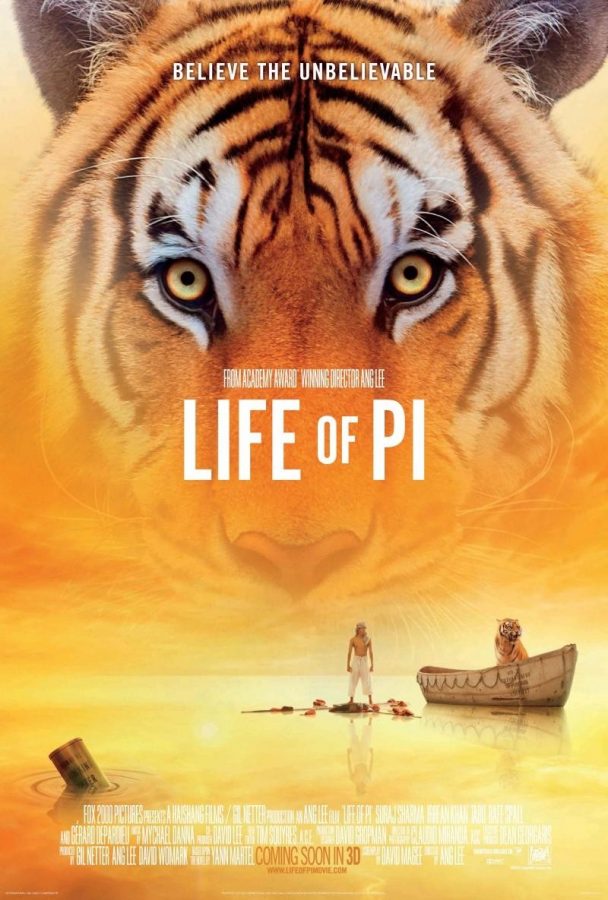
There are a number of films coming out this year based on books that many considered unadaptable. “On the Road,” one of the less ambitious of the adaptations, failed to translate into film. “Cloud Atlas”, difficult due to the massive scope of the novel, looks incredible and is one of my most anticipated films of the year. Then, there’s “Life of Pi,” a book many thought unadaptable due to its incredibly small scope.
The vast majority of the book and film takes place in a small lifeboat whose only occupants are an Indian boy named Pi and a Bengal tiger, stranded on the ocean after a shipwreck. It’s not quite a story one would imagine translating well to the screen, but after seeing the dazzling visuals “Life of Pi” has to offer, it’s hard to imagine it adapted any other way.
Piscine Molitor Patel (Suraj Sharma), or Pi for short, lives with his family in India, where they own and maintain a large zoo. When Pi is 14, his family decides to move to Canada due to the political situation in India. They board a ship with their entire zoo of animals, and journey across the Pacific. The ship is overtaken by a storm, and Pi is left stranded on a lifeboat with only their Bengal tiger, named Richard Parker, as a companion. Of course, he’s a fairly aggressive companion, so along with the obvious struggles Pi has being shipwrecked, he must attempt to make peace with this animal.
The film very easily could have been a disaster, as working with animals and the sea separately are always a challenge. But combined with massive special effects, the strange story line translated perfectly on screen. Director Ang Lee (“Crouching Tiger, Hidden Dragon” and “Brokeback Mountain”) would have pulled off a minor miracle by making a merely competent film, but he has gone even further, crafting one of the most technically astounding and visually stunning films I’ve seen in years. Lee goes above and beyond at every turn, from special effects so great one can’t even differentiate between the real and CGI tiger, to gorgeous cinematography (cinematographer Claudio Miranda deserves immense credit as well) and fantastic performances from his human and animal actors. If there were an Oscar category for best animal actor, the tiger in this film would be a lock.
The film falters a bit only in its storytelling; the whole film is framed by an older Pi (Irrfan Khan) retelling the story to a writer, but he is only really present towards the beginning and end of the film. Pi also tells the writer that this is a story that will “make you believe in God,” and although it didn’t quite do that for me, I still found it to be a joyous, inspirational film.
Any bump in the screenplay was smoothed by Lee’s incredible direction. “Life of Pi” may not win best picture, but I can’t imagine anyone else deserving best director more than Lee. This is a film that hinges immensely on him, and he knocks it out of the park. I haven’t even mentioned his use of 3D, which I really believe is the best I’ve ever experienced. In the first few shots, I could already feel a depth in the frame that I had never felt in another 3-D film, and Lee never forgets that he has this tool to use, experimenting with it throughout.
“Life of Pi” is quite literally a jaw-dropping cinema experience, one that lets you watch a true genius work his magic on some truly difficult material. I’ve never seen anything quite like it and doubt I ever will again.
4.5/5 Stars


